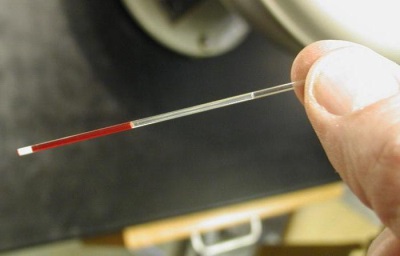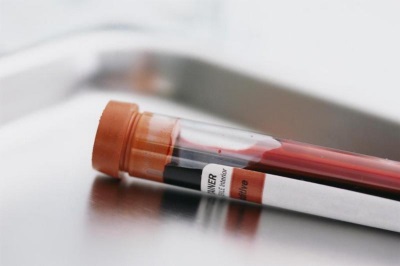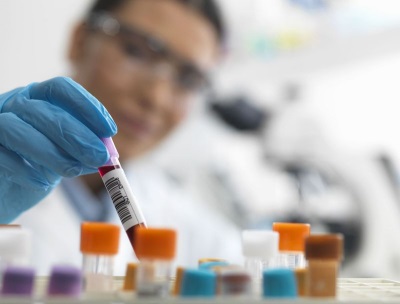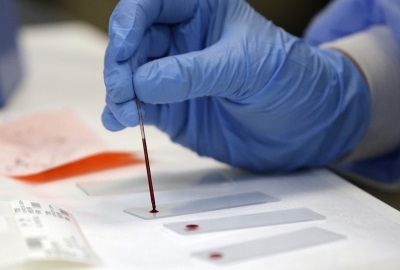Hematocrit norm in children
Among the indicators determined in the analysis of the child's blood, there are not entirely clear to the parents. One of them can be called the hematocrit, which in the analysis is designated by the abbreviation Htc.
What is it
Hematocrit is an indicator indicating the ratio of blood cells to plasma. It is expressed as a percentage and means how much of the whole blood is occupied by the cells. Although hematocrit takes into account the number of all blood cells, red blood cells have the greatest value for this indicator, since they are the most numerous cells in the bloodstream.
Based on this indicator, you can estimate how thick the blood is. If the percentage of blood cells is increased or decreased, it will immediately be displayed on the hematocrit value and will allow the doctor to establish the diagnosis more accurately and not delay in prescribing the treatment.
How to determine the hematocrit
Hematocrit is one of the indicators of a clinical (also called general) blood test. To determine hematocrit, blood is placed in a centrifuge, and then shaped elements settle down, leaving a layer of transparent plasma at the top. Previously, laboratory workers calculated this figure manually, but now the hematocrit is automatically determined in most laboratories.
Table of normal indicators
Hematocrit value is different for children of different ages. In newborn blood cells there is more than plasma, but by the end of the first week of life their ratio is compared, after which the liquid part of the blood begins to predominate.
The normal hematocrit will be the following figures:
|
Newborn babies |
56% |
|
From the 5th day of life |
53% |
|
From the 10th day of life |
49% |
|
In infants older than a month |
45% |
|
In children older than one year |
35% |
|
From the age of 5 |
37% |
|
In children over the age of 10 |
39% |
|
From the age of 15 |
47% |
Hematocrit changes
Above normal
Hematocrit may increase in a child due to one of these two processes:
- The number of shaped elements becomes more.
- Plasma volume decreases.
In childhood, an increase in hematocrit is most often caused by dehydration, the cause of which may be fever, intestinal infection, lack of drinking, overheating, and exercise. To compensate for the loss of fluid, the body takes the plasma, so the percentage of blood cells in the bloodstream is greater than normal.
Another common cause of high hematocrit is chronic oxygen deficiency. It can provoke lung diseases, heart defects, diabetes, stay in the highlands. In the body of a child with hypoxia, the formation of red blood cells is activated, which affects the hematocrit.
In addition, elevated hematocrit is diagnosed with:
- Polycythemia.
- Long-term use of glucocorticoids.
- Use of diuretic drugs.
- Burns
- Bleeding
- Leukemia
- Injuries.
- Peritonitis
- Diseases in which blood coagulation is impaired.
- Kidney disease.
The main danger of increasing hematocrit is the deterioration of the promotion of thicker blood through the vessels and the formation of clots that overlap the small vessels, worsening the work of the internal organs. That is why, if the figure is 10-12% higher than the upper limit of the norm, it should not be left without the attention of the doctor.
The pediatrician will evaluate other blood test data and refer the child for additional examinations, and then prescribe therapy, as a result of which hematocrit will return to its normal state.
Below normal
Reduction of hematocrit can be caused by various reasons, among which are insufficient formation of blood cells, and their increased destruction, and an increase in blood volume, and its dilution. The basis of the decline in this indicator, too, are two processes. In a child, either the amount of plasma increases, or the number of blood cells decreases.
The most common causes of low hematocrit in children are:
- Edema due to impaired kidney function.
- Acute bleeding.
- Anemia caused by vitamin B9 and B12 deficiencies or iron deficiency.
- Hemolytic anemia.
- Aplastic anemia.
- Hyperproteinemia caused by feeding babies with goat or cow's milk.
Having identified underestimated hematocrit in a child, it is important to additionally examine a small patient in order to determine what provoked such changes. If the hematocrit falls below 20-25%, it threatens the child with oxygen starvation and disruption of the internal organs, especially the brain.
Depending on the reason for the action to increase hematocrit to normal values will be different:
- If the child has edema, you should check the work of the kidneys and appoint diuretic drugs.
- With deficient anemia, it is important to fill the nutritional deficiencies. If we are talking about iron deficiency, the child is prescribed drugs with this element. With a shortage of vitamins, the doctor will prescribe drugs, of which the child will receive them in the right quantity.
- In the case of acute bleeding, the child is hospitalized. If the condition is severe, the erythrocyte mass or other blood products begin to be transferred to the baby.
- If the doctor suspects aplastic anemia, the child will be sent for special examinations, which determine the state of the bone marrow.
- If you increase the amount of protein in the bloodstream, you should review the nutrition of the child. Breastfeeding or infant formula with optimal protein content is recommended for babies up to one year old.
More information about the general analysis of blood, see the transfer of Dr. Komarovsky.

















